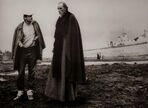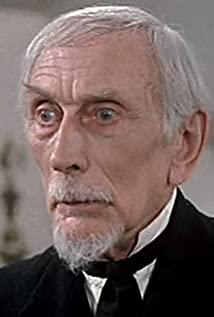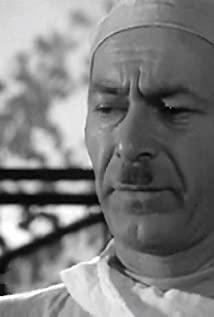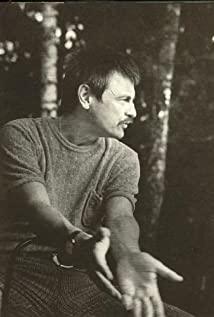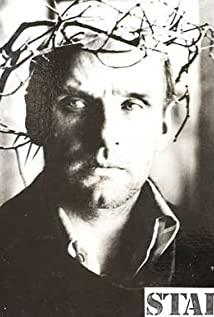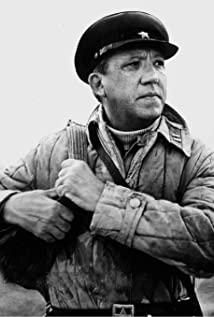This film is considered by the film critics to be one of the 100 most classic films, and the director is considered to be one of the best directors in any era. The main line of the film revolves around Andrei Rublev (Andrei Rublev), describing his life in the monastery. The time clues are very smooth. Although Andrei Rublev is used as the clue in the plot, he is not the main character, but each scene has a theme. The end is a careful shot of Andrei Rublev’s paintings, and finally four horses in the water. I think the theme of the movie is religious, specifically Orthodox. Therefore, if you want to properly understand the theme expressed in the film, you should have an understanding of the Orthodox Church and the history of Russia at that time. But movies are open-ended after all, and the experience of watching movies is private after all, so what I express is my experience and feelings of watching movies. The immediate thought after watching the movie was that the director was procrastinated, and the director seemed to be very proud and looked down upon his audience (or wayward). But I have to admit that this movie has depth and can cause people to think (in other words, the director found a problem). The movie is divided into eight acts in total: I. The Jester (Summer 1400) This passage is about three monks Andrei, Daniil and Kirill from the monastery. In order to escape the rain, they came to a dilapidated house. They mainly talked about these three people. Seeing everything in this room, according to the later judgment, they were on the way to Moscow from the monastery where they were originally located. There are already many people in this room, and the protagonist of this scene is the wandering artist in the room. The wandering artist is telling a simple story about a comical sex scandal that happened to the nobleman and his wife. Although the story is simple, the artist has climax performance skills, beating drums, dancing, rich facial expressions and exaggerated tones are very attractive, so that the poor people onlookers (judging by clothing) enjoy it very much and are willing to give it to him Bring some food. The wandering entertainers were of course mocking the noble master who ruled them, and then a group of officers and soldiers came in the rain and arrested him. II. Theophanes the Greek (Summer–Winter–Spring–Summer 1405–1406) This scene is about three people coming to Moscow. Kirill visits Theophanes the Greek. At that time, prisoners are being dealt with in the adjacent square. The protagonist of this scene is Kirill. The director portrays Kirill's character and his inner state through the conversation between the two. He thought a lot, but read less. He is in pain. He is very proud. The second protagonist, Theophanes the Greek, is also suffering because of his heavy work. Theophanes is like a child. This reminds me of Michelangelo. I observe their works. Their religious paintings have a strong color of asceticism and asceticism. Michelangelo did not shy away from nakedness. Michelangelo painted a lot of frescoes, just as hard as a child. III. The Passion According to Andrei (1406) This scene depicts the three returning to the monastery. Andrew got the job unexpectedly by Kirill. The protagonist of this scene is also Kirill, and Kirill starts reading the Bible again. Then angrily condemned the fall of the monastery, and then ran away. Kirill reminded me of a monk in the novel "Brothers Karamazov" who was alone in the wild, who drank honey for a living, sounded like thunder, and carried iron chains. Another highlight of this scene is the conversation between Andrew and Daniil, Danill sincerely told his jealousy. The direct emotional communication between two people is great. IV. The Feast (1408) I think it has entered the scope of religious themes from this point on. Andrew started his own trip, and his first adventure was a collective carnival with a group of people at night. The people attending The Feast were obviously another "Sodom" in Russia, and Andrew became an angel incarnation here. Those who know the story of Sodom (see the Old Testament) know that the people of Sodom are fallen people. The people here do not believe in God, have sexual promiscuity and have no morals. God sends angels to visit, and they even want to sodomize angels. . In the end, despite the request of the righteous man who had protected the angel, God still destroyed Sodom with a rain of sulfur. In The Feast, Andrew was kidnapped by the villagers and prepared to kill him at dawn. Fortunately, he was rescued by a naked woman who wanted to have sex with him. Andrew flatly refused, and left by boat at dawn, while the naked woman and her lover were hunted down by the villagers. At the end of the film, a naked woman swims in the fog and flees to the other side, while Andrew, in his own fantasy, becomes Christ and is nailed to the cross again. The argument here is: Greek believes that even if Jesus descends in this age, people will still be nailed to the cross, and the people who nailed Jesus to the cross believed in God, at least by the order of God. Greek is ironic and critical of human nature. Andrew believes that Jesus is omnipotent, but he did not save himself and was willing to be nailed to the cross because he hoped to express God's forgiveness and mercy for humanity through his own sacrifice. He hopes to touch mankind and awaken their conscience through his own sacrifice. Jesus is the lamb (do not use violence). Contrary to Greek, Andrew has hope for humanity. V. The Last Judgment (Summer 1408) The theme of this scene and the theme of the next scene are both "violence" in my opinion. Andrew came to the church and started painting, but refused to paint the Last Judgment. He believed that this was against the philanthropic spirit of Jesus. Jesus used love to influence mankind instead of using fear to intimidate mankind. Finally, he changed the painting "Last Supper". In this scene, the director used pure white walls, cute princesses to set off the atmosphere, and used ideas conflicts with opponents to expand the plot. There is also the appearance of pigeons (the Holy Spirit) in the film. VI. The Raid (Autumn 1408) scene takes the theme of violence to the extreme. The duke's younger brother was insensitive (killed without blinking) and complicated with the Tatars (Mongols, here symbolizing pagans) to capture the city where the church is located. The Tatars burned and killed fornication and tortured the prisoners. The scene is extremely miserable. After experiencing this catastrophe, Andrew was shaken in his beliefs. First of all, he was desperate for humanity (Tatar's brutality and inhumanity are like black holes, so you can't imagine what other methods they will use to do it. Tortured people), and then became suspicious of non-violence (he killed a Russian himself). The curse of the suffering Russians on the Tatars (the Tatars will be judged by the doomsday and go to hell), so that Andrew also has doubts about his own paintings (the theme of the judgment on the doomsday was previously rejected by him). VII. The Silence (Winter 1412) This scene shows doubts about faith. After this catastrophe, Andrew returned to the monastery and stopped talking and no longer painting. At this time, there was a famine in this place. The Tatars came to patrol and took away the Russian girl Durochka (and Andrew was the survivor in the previous scene). Durochka betrayed her faith and willingly went with the Tatars for the sake of eating meat and treating the Tatars. Like the power of mastery (like Tatar armor and helmets). Kirill was hungry and couldn't stand it and ran back to ask for mercy from the elders. After Kirill came back, he confessed his jealousy to Andrew and hoped that Andrew would not waste the talents God gave him. VIII. The Bell (Spring–Summer–Winter–Spring 1423–1424) The protagonist of this paragraph is a bell-making boy. Describe the pressure he endured, and finally succeeded in casting the bell. At the end of the film, he said that his father did not tell him the secret of making the bell until his death, and then wept bitterly. Andrew is a bystander character, but at the end of the film, he holds the boy who cast the bell. At this time he reached a reconciliation with himself (agreeing to continue painting). what is the reason? I think the director here is very bold, he made a secular deconstruction of the image of Jesus. The boy who cast the bell was Jesus. His father did not tell him the mystery, but the boy still fulfilled his mission with his faith and opportunity (finding suitable clay). During this period, the teenager was also angry and used violence (Jesus once flogged the Pharisees), but was persuaded by Andrew. Finally, Andrew held the young man and agreed to continue painting, because he realized that the truth of God still needs to be realized by himself. Then came Andrew's paintings. The director seems to be saying that I think of these stories from these paintings. Through painting, I explored Andrew's inner world. Regarding the opening and closing credits, the person who took the hot air balloon successfully flew into the sky, but finally fell down and died. At the end of the film are four horses in the water. The horse is very interesting. There are scenes of the horse falling in many places in the film. According to Wikipedia, people in hot air balloons are considered to symbolize people who escape from reality and break their dreams (mocking themselves?), while horses are a symbol of life (falling, calm). In any case, the advantages of this film are obvious. The director is very good at portraying human nature and expressing the innermost feelings of the characters in various ways. This movie is full of religion, philosophical speculation, and the 15th-century Russian history and religion that the movie is trying to portray and want to show makes this movie heavy and deep. The film's tonal scenery and extensive use of long shots are also excellent. At the same time, the shortcomings are also obvious: the rhythm of the film is too slow, and there is too much to express, but the performance is not clear, and the corresponding strength and depth are also compromised. There is also the director's lack of control over the audience's perception. In the beginning of the movie, the person in the hot air balloon successfully flew into the sky, but he fell down and died in the end. At the end of the film are four horses in the water. The horse is very interesting. There are scenes of the horse falling in many places in the film. According to Wikipedia, people in hot air balloons are considered to symbolize people who escape from reality and break their dreams (mocking themselves?), while horses are a symbol of life (falling, calm). In any case, the advantages of this film are obvious. The director is very good at portraying human nature and expressing the innermost feelings of the characters in various ways. This movie is full of religion, philosophical speculation, and the 15th-century Russian history and religion that the movie is trying to portray and want to show makes this movie heavy and deep. The film's tonal scenery and extensive use of long shots are also excellent. At the same time, the shortcomings are also obvious: the rhythm of the film is too slow, and there is too much to express, but the performance is not clear, and the corresponding strength and depth are also compromised. There is also the director's lack of control over the audience's perception. In the beginning of the movie, the person in the hot air balloon successfully flew into the sky, but he fell down and died in the end. At the end of the film are four horses in the water. The horse is very interesting. There are scenes of the horse falling in many places in the film. According to Wikipedia, people in hot air balloons are considered to symbolize people who escape from reality and break their dreams (mocking themselves?), while horses are a symbol of life (falling, calm). In any case, the advantages of this film are obvious. The director is very good at portraying human nature and expressing the innermost feelings of the characters in various ways. This movie is full of religion, philosophical speculation, and the 15th-century Russian history and religion that the movie is trying to portray and want to show makes this movie heavy and deep. The film's tonal scenery and extensive use of long shots are also excellent. At the same time, the shortcomings are also obvious: the rhythm of the film is too slow, and there is too much to express, but the performance is not clear, and the corresponding strength and depth are also compromised. There is also the director's lack of control over the audience's perception.
View more about Andrei Rublev reviews




